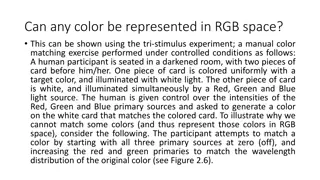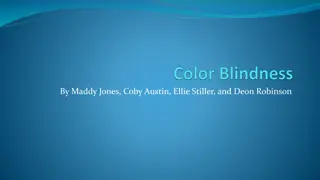Exploring the Basics of Color Theory
Understand the essence of color with insights into the sources, perception, and interpretation of color. Dive into the color wheel, primary, secondary, tertiary, warm, cool, and neutral colors, and learn about color harmony to create visually pleasing designs.
Download Presentation

Please find below an Image/Link to download the presentation.
The content on the website is provided AS IS for your information and personal use only. It may not be sold, licensed, or shared on other websites without obtaining consent from the author. Download presentation by click this link. If you encounter any issues during the download, it is possible that the publisher has removed the file from their server.
E N D
Presentation Transcript
BASICS OF COLOUR Presented by: Vivek Painuli
WHAT IS COLOR? Aray of light is the source of all color It is perceived by the eye and interpreted by the brain It is an internal sensation expressed when colored light waves stimulate the eye
WHAT IS COLOR THEORY? Asystem of rules and guidance for mixing various colors, in order to: Create visually pleasing designs Produce maximum readability & clarity Use cultural associations to effect meaning
THE COLOR WHEEL The basic tool we use when working with color
PRIMARY COLORS Red, Yellow & Blue
SECONDARY COLORS Orange, green and purple Made by mixing equal amounts of two primary colors
TERTIARY COLORS Red-orange, red-violet, blue-green, blue- violet, yellow-green, and yellow-orange Made by mixing an equal amount of a primary color and a secondary color
NEUTRAL COLORS Are colors not found on the color wheel White, black, grey, brown, beige, tan, and cream
WARM COLORS Reds, yellows, and oranges Create feelings of warmth, activity, and excitement
COOLCOLORS Blues, purples, and greens Create feelings of coolness, calmness, and relaxation
COLOR HARMONY Harmony can be defined as a pleasing arrangement of parts, whether it is music, poetry, color, or even an ice cream sundae. Something pleasing to the eye Engages the viewer and creates a sense of order balance If it s not harmonious it s boring! However, too much can be chaotic the viewer can t stand to look at it!
ANALOGOUS COLORS Any three colors which are side by side on the 12 part color wheel Usually one of the color predominates
COMPLEMENTARY COLORS Any two colors which are directly opposite each other, such as red and green and red-purple, and yellow-green. Here there are several variations of yellow-green in the leaves and several variations of red-purple in the orchid. These opposing colors create maximum contrast and maximum stability.























